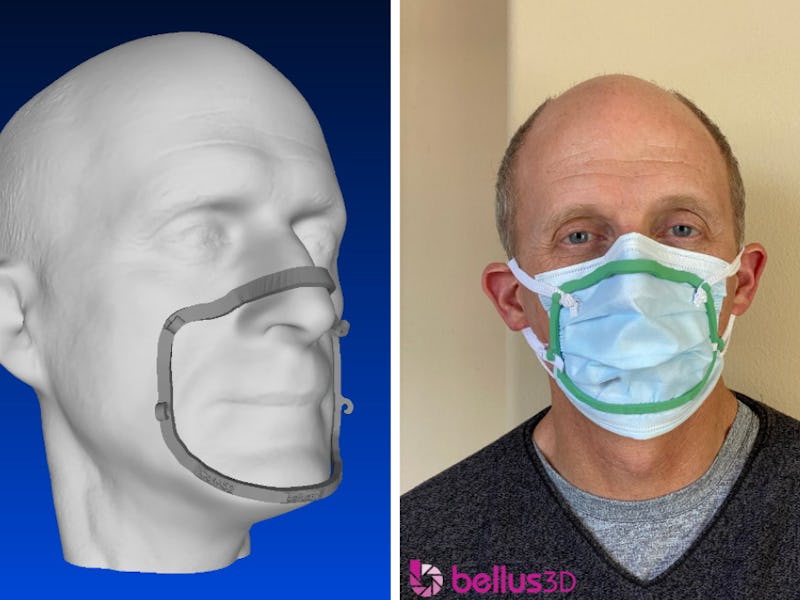Design
This face-scanning app will let you 3D-print the perfect seal for your face mask
The plastic frame will fit your face just right.

The problem with one-size-fits-all face masks is that one size doesn't always fit all. If you find that your mask is too big and doesn't quite seal around your mouth as well as it should, there's an app for that. Bellus3D FaceApp for iOS will scan your face to generate a plastic frame contoured to the specific shape of your face.

Face ID gets another use — If you want to use the app you'll need an iOS device that supports Face ID because it relies on the TrueDepth sensor. It will support the iPhone X, iPhone 11, and iPad Pro.
The app was designed originally for capturing accurate 3D facial scans for use in games and other environments, but Bellus3D recently added a "Mask Fitter" feature specifically for generating plastic frames contoured to your face's dimensions. The National Institute of Health reviewed the feature and approved it for use in a medical setting.
Mask design — It's been shown that the construction of face masks actually matters a lot when it comes to containing coughing and sneezing droplets that carry coronavirus. Loosely folded face masks and bandana coverings provide minimal stopping capability for droplets, while well-fitted homemade masks of multiple layers are reasonably effective. Medical-grade N95 masks have good fitting, but access to those right now is largely limited to actual medical professionals who need them most. Creating your own frame to help fit your mask and lock in particles will give you something pretty close to the N95 mask, which uses metal wire to keep a seal.
Of course, you'll need access to a 3D printer to actually print the frame. There exist lots of website online where you can send your design and have it printed for a small fee, so if you're serious this would be pretty easy. The frame is designed with hooks, so you can attach rubber bands to those and make a chain that wraps around the head to hold the frame on. Unless you want to get fancy, putting the mask on means you'll hold a piece of cloth over your mouth and nose and then place the frame over the cloth. Bellus3D has a full guide on its site for getting the construction done.
If you want something a little more hip and cool, there's also a guide online for turning IKEA's iconic tote bag into a mask. That one doesn't seem to have the NIH stamp of approval, however.